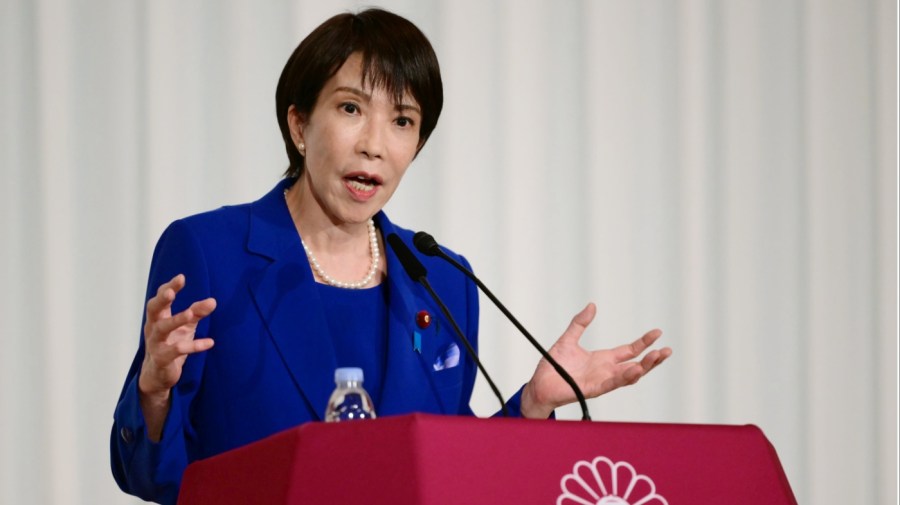Who is Sanae Takaichi, Japan’s first female prime minister?

Sanae Takaichi is officially Japan’s first female prime minister.
The leader of the Liberal Democratic Party (LDP) was elected to the post on Tuesday after winning four more votes than the required majority. Takaichi’s career in politics spans across a handful of ministerial posts and a decade in Japan’s congress.
Japan’s new leader is a conservative nationalist who has expressed admiration for the trailblazing efforts of Britain’s late prime minister Margaret Thatcher. President Trump earlier this month called her “a highly respected person of great wisdom and strength.”
Takaichi is also a motorcycle enthusiast, rock fan and stepmother to three.
What was her path to the premiership?
Prior to becoming LDP’s president on Oct. 4, Takaichi served as Minister of State for Economic Security, Minister of Internal Affairs and Communications, Minister of State for Okinawa and Northern Territories Affairs, Minister of State for Science and Technology Policy, Minister of State for Innovation and Minister of Gender Equality, per her official biography.
She was a member of Japan’s House of Representatives from 1993 to 2003.
Her successful bid to become the party’s leader was her third such effort. She had previously run for the position in 2021 and 2024, when she lost to outgoing Prime Minister Shigeru Ishiba in a runoff.
In her third bid, she labeled herself as a “moderate conservative” and distanced herself from past visits to the country’s controversial Yasukuni Shrine, which holds the remains of several convicted war criminals from World War II.
Takaichi won in the first round of votes on Tuesday, securing the premiership.
She also notably served as an intern for Rep. Pat Schroeder (D-Colo.) in 1987 after graduating from college, the New York Times reported.
What’s on he agenda as Japan’s leader?
Takaichi is expected to focus on a conservative policy agenda that includes a push to make constitutional revisions empowering Japan’s armed forces, boost military spending and increase interest rates to help cope with inflation, the Associated Press and Reuters reported.
She also plans to maintain stable ties with China and shore up support from South Korea. Takaichi opposes same sex marriage and speaks fondly of the tradition of male-only succession within Japan’s monarchy.
More plans about the future of her premiership are expected to be unveiled in a major policy speech later this week, according to AP.
Takaichi has promised to increase representation of women in her government, but on Tuesday appointed just two women to her 19-member cabinet: Satsuki Katayama, the first woman to hold the post of finance minister, and Kimi Onoda as economic security minister.
How will she handle relations with Trump?
Takaichi enters office weeks after Japan and the U.S. announced a trade agreement in which goods imported from Tokyo will face a 15 percent reciprocal tariff, which marked a 10 percent decrease from the previous rate set by the Trump administration.
In exchange, Japan agreed to invest $550 billion in U.S. projects over four years in sectors such as pharmaceuticals, energy, shipbuilding, computer chips and metals.
Takaichi is expected to host Trump during his stop in Japan later this month during the latter leg of his trip to Asia for the APEC summit in South Korea.
“The fact that the Trump administration added a Tokyo stop, I think it’s clearly of great value to Japan, because the worst nightmare has always been the fear of Japan passing,” Mireya Solís, director for the Center for Asia Policy Studies at Brookings, said on a Tuesday panel.
“So I think that that brings very much desired reassurance,” she added.
Solís said the trade friction between the countries has been “deflated” for now, but added “nobody knows actually how to go about and implement this investment fund.”
Solís said Takaichi and Trump had some obvious areas of ideological alignment, noting the prime minister is “a conservative security Hawk who is skeptical of immigration, certainly not a woke character.”
“So you could say that perhaps the leaders might connect there,” she added.